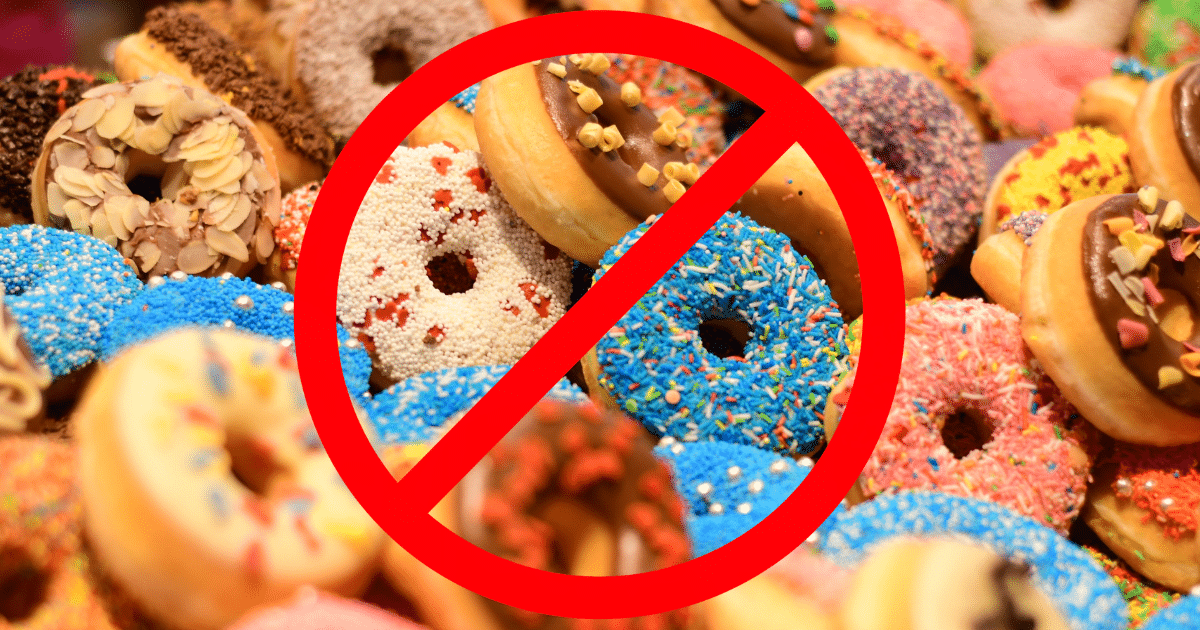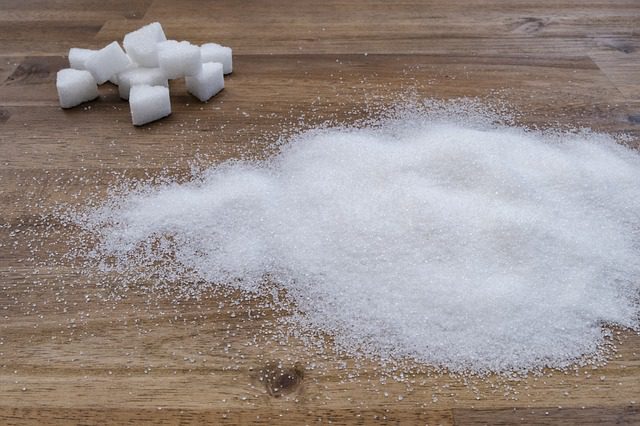Sugar Withdrawal – What You Need to Know
I’m just going to say it… sugar withdrawal sucks.
Deciding to live a healthier lifestyle is a powerful first step, and if you’re reading this, you’re already on your way. For many, a key part of that journey is choosing to remove sugar from their nutrition, which is a fantastic goal.
But cutting out sugar can trigger a temporary but challenging process known as “sugar withdrawal.”
As a certified strength coach and sports nutritionist, I’ve guided many clients through this exact process. While the term “withdrawal” might sound intense, understanding what’s happening in your body is the key to managing it effectively. This guide will break down exactly what to expect and give you the actionable strategies you need to push through and unlock the incredible benefits on the other side.
Disclaimer: This article is for informational purposes only and is not meant to treat or diagnose any condition. It is recommended that you speak with your doctor before starting any exercise program, changing your daily nutrition, or adding any supplements to your regimen.
Table of contents
Key Takeaways
- Sugar withdrawal is a real physiological and psychological process that occurs when you significantly reduce or eliminate added sugar from your diet.
- Symptoms typically peak within the first few days and can include headaches, fatigue, mood swings, and intense cravings as your brain adjusts to lower dopamine levels.
- You can manage withdrawal symptoms by staying hydrated, eating balanced meals rich in protein and fiber, exercising regularly, and getting enough sleep.
- The long-term health benefits, such as weight management, reduced risk of chronic diseases, and improved energy levels, far outweigh the temporary discomfort of withdrawal.

Yes, Sugar Withdrawal Is A Real Thing
It absolutely is. When you cut sugar from your diet, even if you substitute it with sugar alcohols, your body can experience withdrawal symptoms similar to those from other addictive substances. Research supports the idea that sugar can trigger reward pathways in the brain involving dopamine, much like drugs of abuse.
When you consume sugar, your brain releases dopamine, often called the “happy hormone,” which creates a feeling of pleasure. Your brain quickly learns to associate sugar with this reward, driving you to seek it out again. When you take that sugar away, the body and brain have to adjust to the absence of this stimulus, leading to withdrawal.
Related Article: Can You Use Monk Fruit Sweetener While on Keto?
A major challenge is identifying hidden sugars. We know treats like cookies, soda, and candy are loaded with sugar, but it’s also lurking in places you wouldn’t expect. The CDC points out that many condiments, sauces, and even savory foods contain significant added sugars.
- Pasta Sauce: Many popular brands add sugar to balance the acidity of tomatoes.
- Yogurt: Flavored and low-fat yogurts can contain surprising amounts of added sugar to enhance taste.
- Salad Dressings: Many dressings, especially low-fat versions, use sugar for flavor.
This is why reading nutrition labels is non-negotiable. Look for ingredients like high-fructose corn syrup, dextrose, cane sugar, or fruit juice concentrate, which are all forms of added sugar.
You Need to Break the Habit
Like any ingrained behavior, consuming sugar regularly becomes a powerful habit. A well-known 2012 study published in the British Journal of General Practice found that, on average, it takes about 66 days for a new behavior to become automatic. Breaking the sugar habit requires conscious effort, but it’s entirely achievable.
Think about your daily routine. Does it start with sweetened coffee? A glass of orange juice? A bowl of cereal? Many people exceed their daily recommended sugar intake before they even leave for work. The American Heart Association recommends no more than 9 teaspoons (36 grams) of added sugar per day for men and 6 teaspoons (25 grams) for women.
To break the cycle, you need a plan. A great first step is to track your intake. Using an app can be a real eye-opener, revealing the hidden sugars you consume without realizing it.
Pro Tip: Use a nutrition tracking app like MyFitnessPal or Fooducate. Their barcode scanners make it incredibly easy to log packaged foods and see the exact amount of added sugar, turning a difficult task into a simple one.
What Are the Symptoms of Sugar Withdrawal?
Once you commit to cutting sugar, your body needs time to adjust. During this period, you may experience a range of symptoms that vary in intensity from person to person. These symptoms are temporary and a sign that your body is recalibrating.
Here’s a breakdown of what you might expect, grouped by category:
Psychological Symptoms
- Mood Swings & Irritability: As your brain’s dopamine levels adjust, you might feel more irritable or anxious.
- Intense Cravings: This is one of the most common symptoms as your brain signals for its usual reward.
- Anxiety or Depression: Some people experience feelings of sadness or anxiety as their brain chemistry changes.
- Difficulty Concentrating: “Brain fog” is a common complaint as your body adapts to a new energy source.
Physical Symptoms
- Headaches: Throbbing headaches are very common in the first few days of a sugar detox.
- Fatigue & Lethargy: You may feel tired as your body learns to rely on more stable energy sources instead of quick sugar hits.
- Nausea or Bloating: Your digestive system might need a few days to adjust to your new diet.
- Muscle Aches: Some people report flu-like body aches, sometimes called the “sugar flu.”
- Sleep Pattern Changes: You might have trouble falling asleep or staying asleep initially.

These symptoms typically peak within the first 2-5 days and then gradually subside over one to two weeks. It’s crucial to remember that this phase will pass. Resisting the urge to give in will ultimately make you mentally stronger.
How to Reduce Sugar Cravings and Withdrawal
You don’t have to just endure the symptoms of sugar withdrawal. With the right strategies, you can significantly reduce their intensity and set yourself up for success. In my experience as a nutritionist, focusing on adding the right foods is just as important as removing the wrong ones.
Here are some effective ways to manage cravings and withdrawal:
- Increase Protein and Healthy Fats: Protein and fats help stabilize blood sugar and keep you feeling full, which is your best defense against cravings. Incorporate foods like chicken, fish, eggs, avocados, nuts, and seeds into every meal.
- Stay Hydrated: Dehydration can often be mistaken for hunger or cravings and can worsen withdrawal headaches. Aim to drink plenty of water throughout the day. Replacing sugary drinks with water is a huge win.
- Fill Up on Fiber: High-fiber foods slow down digestion, promoting satiety and helping to regulate blood sugar levels. Focus on vegetables, beans, and legumes.
- Get Moving: Physical activity is a proven way to boost your mood by releasing endorphins. Even a short walk can help crush sugar cravings, as confirmed by research.
- Plan Your Meals: Having healthy meals and snacks ready prevents you from grabbing something sugary when hunger strikes. Clean out your pantry to remove temptation.
Is It Worth Removing Sugar from Your Nutrition?

Absolutely. While the initial withdrawal period can be tough, the long-term benefits for your health and well-being are immense. Some people prefer to taper off sugar slowly, while others go “cold turkey.” For most, I recommend the all-in approach because it rips the band-aid off and prevents the cycle of “I’ll start tomorrow.”
The health and weight loss rewards you gain are completely worth the short-term discomfort. Reducing added sugar intake is linked to a lower risk of obesity, type 2 diabetes, and heart disease.
According to the World Health Organization (WHO), reducing your daily intake of free sugars to less than 10% of your total energy intake provides significant health benefits. A further reduction to below 5% can lead to even more improvements.
Your brain will also thank you. Once you push past the initial fog, you’ll likely experience better focus and more stable energy levels throughout the day. Taking on the challenge to remove added sugar is one of the best things you can do for your health. It won’t be easy, but it will be worth it.
Sugar Withdrawal FAQs
How long does sugar withdrawal last?
The most intense physical symptoms of sugar withdrawal typically last for 3 to 7 days. Milder psychological symptoms, like cravings and mood changes, can sometimes linger for a few weeks as your brain chemistry fully adjusts.
Will I lose weight if I quit sugar?
Many people do lose weight. Added sugars contribute “empty calories” without providing nutrients that keep you full, like protein and fiber. By cutting out sugary foods and drinks, you naturally reduce your calorie intake, which supports weight management.
Can I use artificial sweeteners instead of sugar?
While they don’t contain calories, some experts suggest avoiding artificial sweeteners during a detox. They can sometimes perpetuate cravings for sweet tastes. It’s often better to let your taste buds adjust to less sweetness altogether. A short walk can also be leveraged to reduce sugar cravings, which research has found to be helpful.
What is the fastest way to get over sugar withdrawal?
There’s no magic bullet, but you can minimize the discomfort. Stay very well-hydrated, prioritize meals with high protein and healthy fats, get at least 7-8 hours of sleep per night, and engage in light exercise like walking. These actions help stabilize your blood sugar and mood.


*Disclosure: This article may contain affiliate links or ads, which means we earn a small commission at no extra cost to you if you make a purchase through these links. These commissions help support the operation and maintenance of our website, allowing us to continue producing free valuable content. Your support is genuinely appreciated, whether you choose to use our links or not. Thank you for being a part of our community and enjoying our content.
PLEASE CONSIDER SHARING THIS ON YOUR SOCIAL MEDIA TO HELP OTHERS LEARN MORE ABOUT THIS TOPIC.
References:
- Gardner, B., et al. (2012). Making health habitual: the psychology of ‘habit-formation’ and general practice. British Journal of General Practice. 62(605), 664-666.
- Avena, N. M., Rada, P., & Hoebel, B. G. (2008). Evidence for sugar addiction: Behavioral and neurochemical effects of intermittent, excessive sugar intake. Neursci Biobehav Rev., 32(1), 20-39.
- Johnson, A. (2016). Beating brain fog. The Sugar Movement.


*Disclosure: This article may contain affiliate links or ads, which means we earn a small commission at no extra cost to you if you make a purchase through these links. These commissions help support the operation and maintenance of our website, allowing us to continue producing free valuable content. Your support is genuinely appreciated, whether you choose to use our links or not. Thank you for being a part of our community and enjoying our content.
PLEASE CONSIDER SHARING THIS ON YOUR SOCIAL MEDIA TO HELP OTHERS LEARN MORE ABOUT THIS TOPIC.





